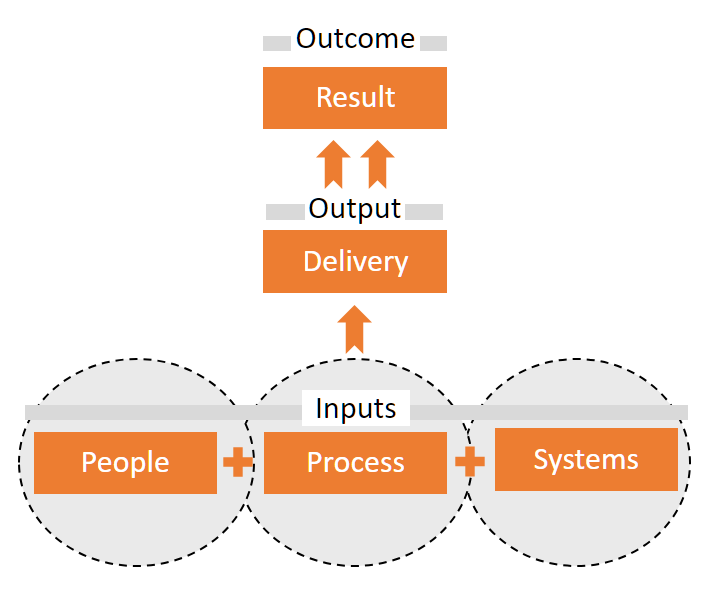At the end of a project, or on the eve of go-live, have you ever reflected and thought?
The team have done a great job and worked so hard to get us here, however:
- I am not sure the project has or will deliver the benefit we intended.
- Is this project enabling us to achieve what we need to?
- Why has this taken so much more time than expected?
- Why has it cost more than budgeted?
- Surely we could have foreseen some of the risks or issues?
- Why has it been so challenging?
In our experience, the best place to start is to go back to project establishment and identify if the project has a well-defined outcome. This isn’t the functionality of a solution, nor the tool, nor the scope of deliverables, nor the project management methodology. Ask: Does the defined outcome articulate the desired benefit to the organisation and your customers?
It is critical at the commencement of the project to spend the time defining outcomes. These need to be balanced across financial, people, customer, and risk, or efficiency, effectiveness, and experience. By having balanced outcomes, it minimises the likelihood of unintended consequences and helps everyone involved in the project to make decisions which remain aligned to the original goals. A major cause of unintended consequences is focusing too heavily on one element and being blind to another.

One problem we often find is that leaders focus first on the deliverable or the issue, which often leads to a pre-determined solution. Additionally, leaders tend to focus on subjective factors such as peoples’ personality, behaviours, perceived capability, and opinions on performance. However, if we start with the outcome required, it clarifies the opportunity more objectively, aligns project stakeholders around customer and organisational benefits, and leads to well-defined performance measures. From this vantage point, better solutions are designed based on requirements pointed at the outcome. When required outcomes are well defined and documented, project establishment can commence. This doesn’t need to be a 50 page document, in fact it should be short, sharp and concise. It’s not about the project artefacts or outputs, it’s about the outcome defining the value the project will create or enable.
The outcome definitions’ true value is active use throughout project governance and guiding decisions along the journey. All decisions made during the project implementation should be made in reference to the agreed outcomes. Otherwise, the project may continue to blindly implement the deliverables in scope without continual validation that those deliverables are actually going to achieve the outcomes.
You can manage a project to the agreed scope, but if you don’t initially focus and adapt over the course of the project to achieve the agreed outcomes, often the project will not deliver the value intended.
So, next time you embark on a new project, invest some time in documenting the outcomes with targets you can measure before and after the project. If you’re finding it hard to come up with the measures, then it’s a good indicator that your organisation isn’t clear enough on the reasons to do the project and you need to revisit the business case or original analysis. If you skip this step, you’ll likely pay for it with interest throughout the project. Once the outcomes are documented in a measurable way, it’s time for project establishment, to set the project up for success.